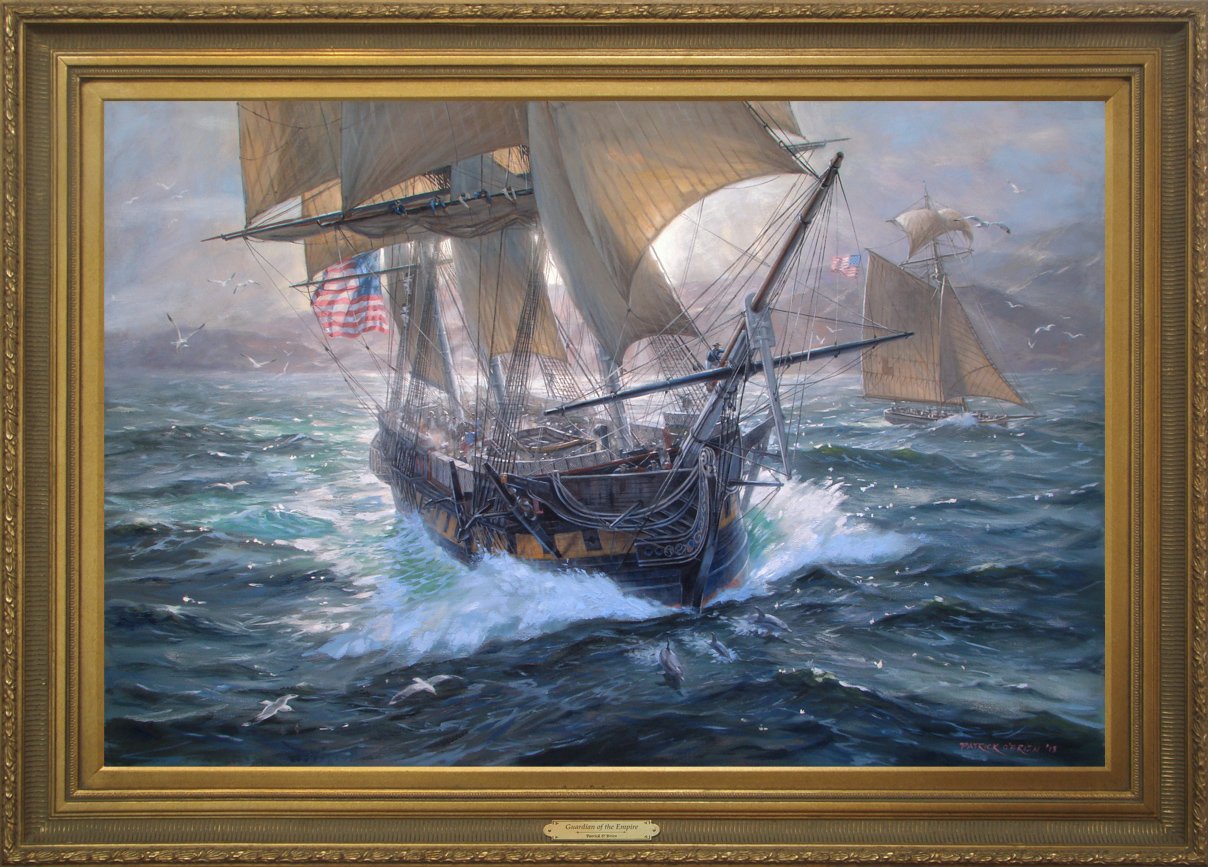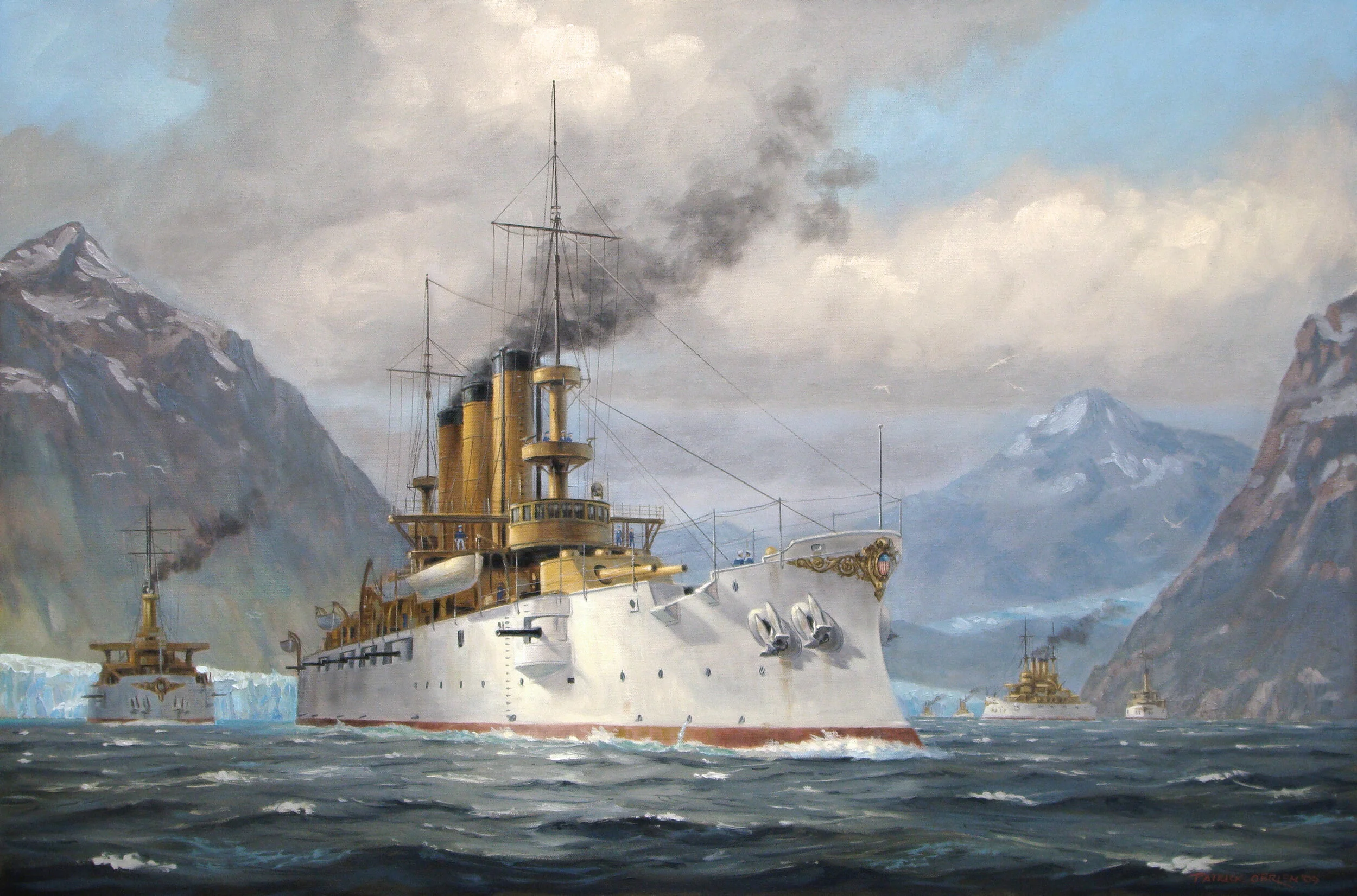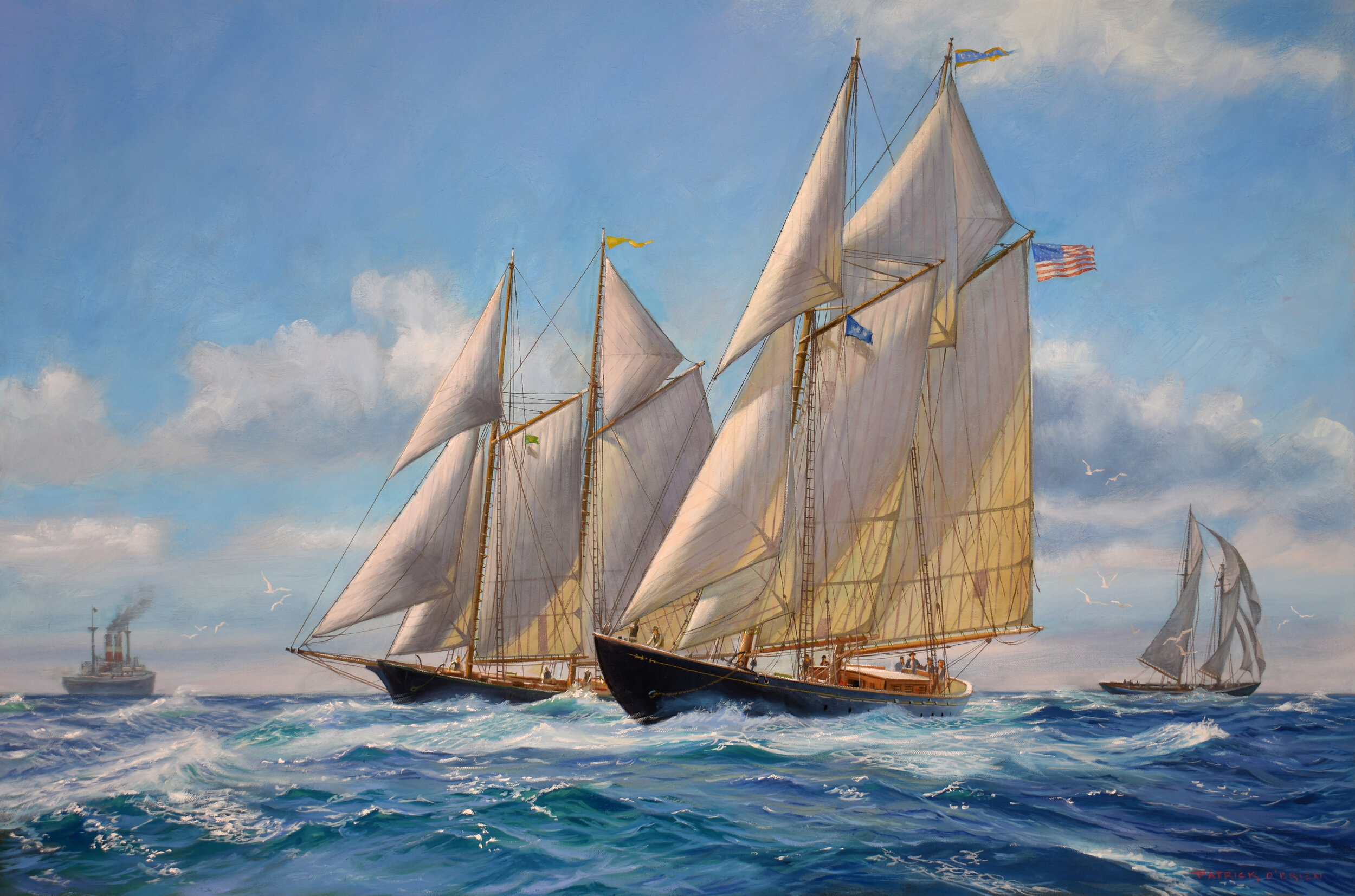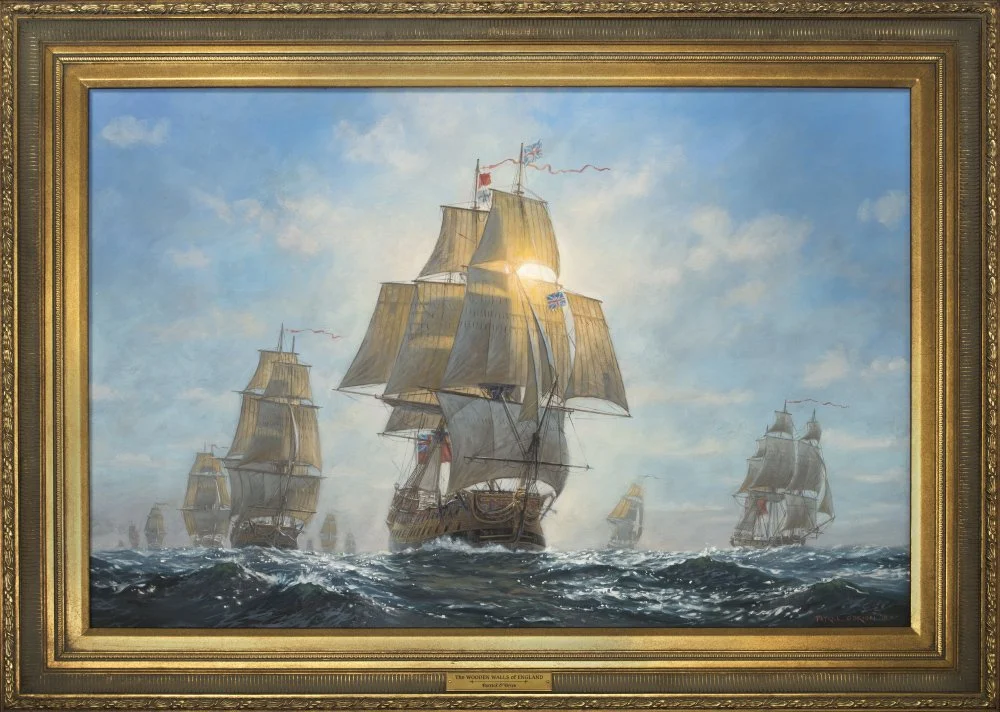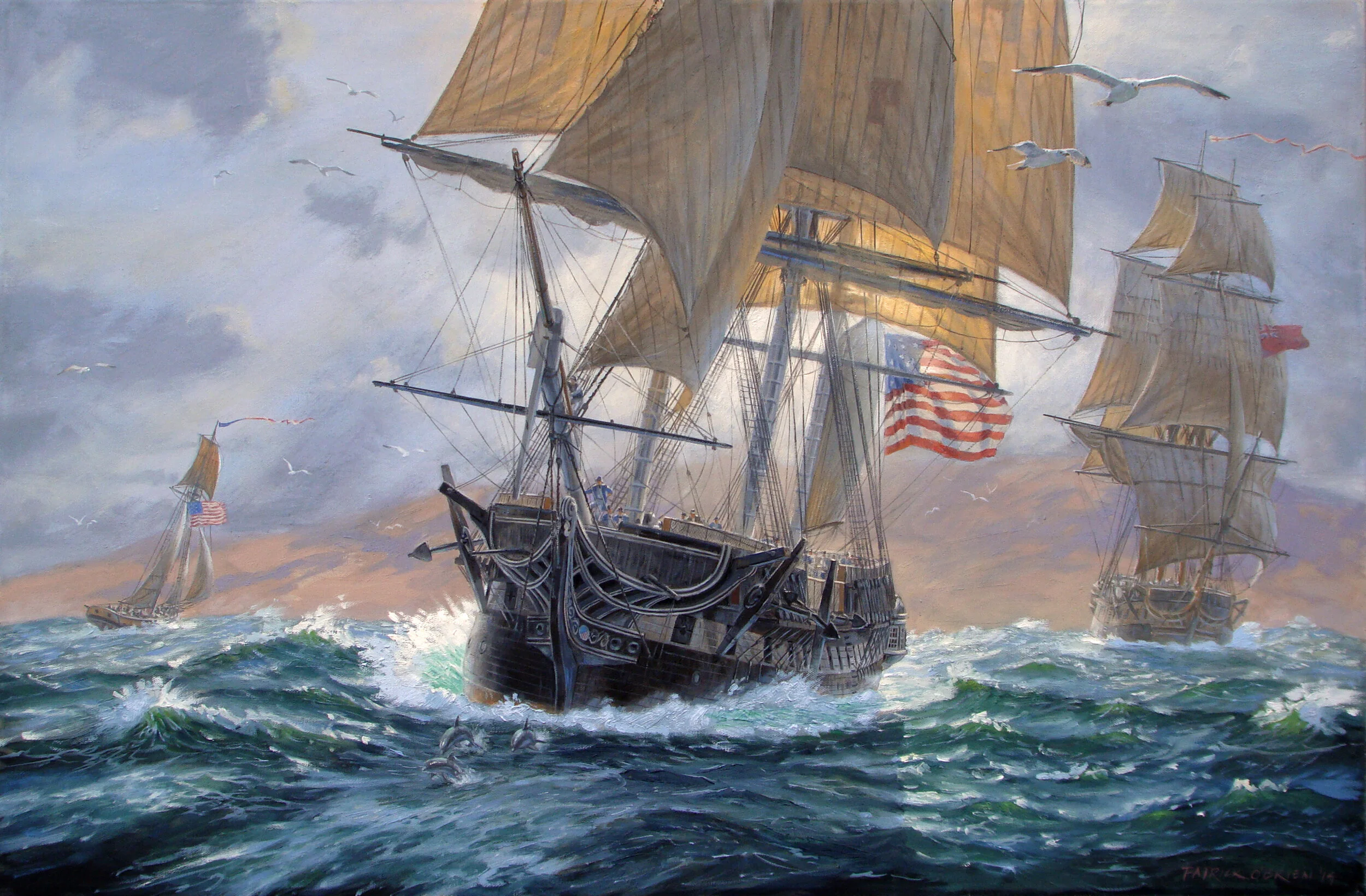paintings of ships at sea
The USS United States on Patrol
The United States was one of the first ships of the new U.S. Navy. Built in 1797 in Philadelphia, she carried over 50 cannons and about 500 men. Her crew nicknamed her “Old Wagon.” Herman Melville, the future other of Moby Dick, sailed onboard in 1843 as an ordinary seaman. He wrote a book about it, White Jacket, although he changed the name of the ship to the USS Neversink.
The Great White Fleet
This painting won the Museum Purchase Award at the Mystic Seaport Museum.
When President Theodore Roosevelt sought to demonstrate America’s growing military power, he sent a fleet of battleships on a cruise around the world. This became known as the Great White Fleet. The painting depicts the fleet passing through the Straits of Magellan.
A Brisk Wind
Two schooners enjoying a brisk wind in the Atlantic. These types of schooners were developed in New England for the fishing trade in the North Atlantic. They were known for their speed and so the design was often used for racing yachts.
The Wooden Walls of England
England was the world’s only superpower in the 18th century, projecting its might around the globe with its vast numbers of wooden warships. England was an island fortress without walls, so her battleships functioned as the country’s defense, collectively forming “the wooden walls of England.”
USRC Bear in the Arctic
(USRC stands for United States Revenue Cutter.) The USRC Bear was probably the most famous ship of the US Coast Guard. She had a long and varied career serving in the upper latitudes. In 1909 she assisted in the relief after the big earthquake in San Francisco.
A Friendly Race
This painting depicts a little known event in the long career of the USS Constitution. While stationed in the Caribbean in 1799, Constitution sighted a ship which turned out to be a British frigate. This was a time of peace between England and America. The English captain turned out to be an acquaintance of the American captain, and he came on board. He expressed great admiration for the American ship, but declared that his own ship was faster. He offered to bet a cask of Madeira on a trial of speed. The contest began at dawn the next day upon the firing of a gun. All day long the two ships raced, until at the end of the day the British ship was left far behind. Just after dark, the English captain was rowed over to the American ship, a large cask of Madeira in the boat with him.
Esteem Splendour
This painting is one of seven paintings that Patrick was commissioned to do for ExxonMobil. The paintings depict newly built supertankers, and were given as gifts to the captains and crews of the ships. These paintings are probably Patrick's best traveled artwork, since they are hanging in the captain's quarters onboard the vessels
USS Loggerhead
This painting was commissioned by a client whose grandfather had served on the submarine during WWII.
Guardian of the Empire
England was the world’s only superpower in the 18th century, projecting its might around the globe with its vast numbers of wooden warships. England’s men-of-war also functioned as the country’s defense, collectively forming “the wooden walls of England” around the island nation.
At that time huge warships lined up one behind the other to form a line-of battle, and blasted away at the enemy’s line of ships. A warship that was large enough to participate in this was called a ship-of-the-line. The most common size of these ships was the 74-gun, meaning that they carried 74 cannons.
Rounding Cape Horn
Windjammers were built for speed. They were the ultimate development in sailing ships at the end of the age of sail, but steam powered ships gradually replaced them. This paintings shows a windjammer rounding Cape Horn at the tip of South America.
